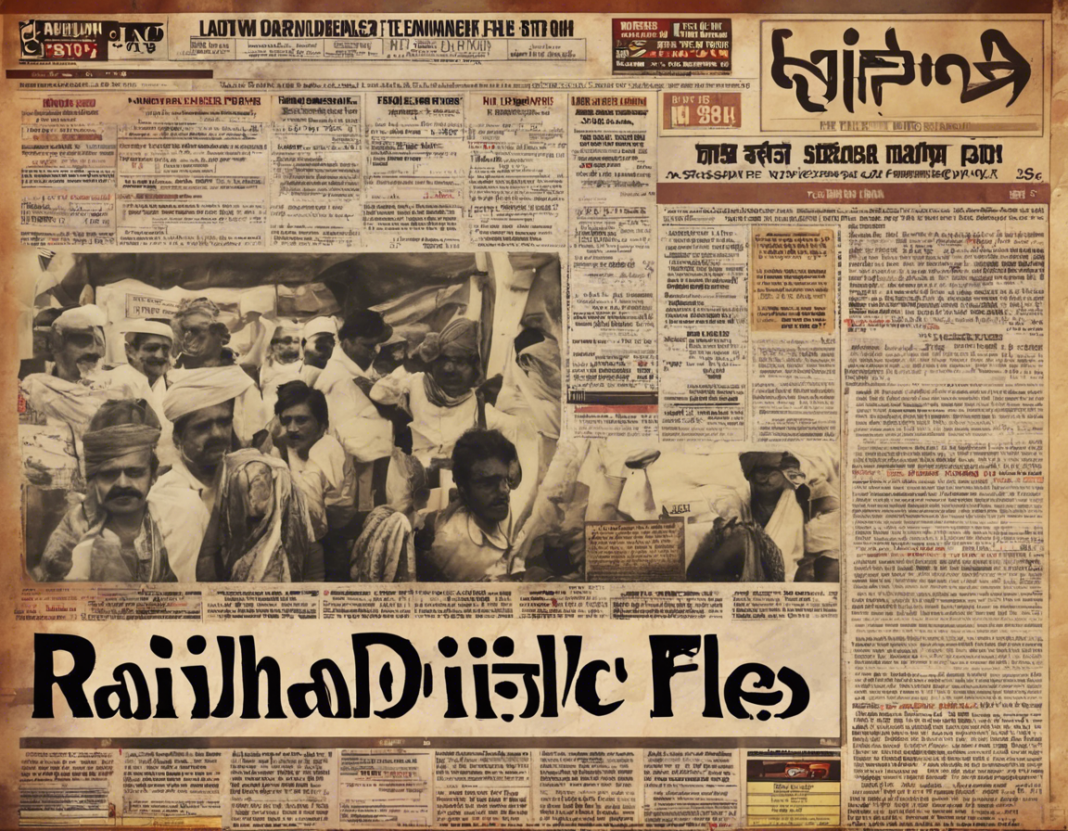India’s capital, New Delhi, reigns as one of the most prestigious and dynamic cities in the country. Home to the parliamentary and judicial systems, as well as numerous government offices, it serves as the political hub of the nation. However, beyond the grandeur of its monuments and the buzz of its bustling streets lies a deeper, nuanced narrative encapsulated in what can be termed as the Rajdhani Files. These files contain a wealth of information that not only shed light on the history and evolution of the city but also provide insight into its cultural, social, and economic fabric.
Unveiling History: Tracing the Roots of New Delhi
At the heart of the Rajdhani Files is the historical saga of New Delhi. The city carries within its bosom tales of empires and kingdoms, with each dynasty leaving an indelible mark on its landscape. From the regal grandeur of the Mughals to the imperial designs of the British, New Delhi stands as a testament to the rich tapestry of India’s past. The Red Fort, Qutub Minar, India Gate, and the Rashtrapati Bhavan are not just architectural marvels but also embodiments of the city’s historical legacy.
Political Nexus: Inside the Power Corridors of New Delhi
As the epicenter of India’s political machinery, New Delhi is where decisions are made, policies are formulated, and governance is executed. The Parliament House, with its two houses – the Lok Sabha and the Rajya Sabha, symbolizes the essence of India’s democracy. The President’s House (Rashtrapati Bhavan) and the Prime Minister’s Office are not just administrative buildings but symbols of power and authority. The intricate web of ministries, bureaucracies, and political institutions that dot the cityscape is a testament to its significance in the country’s governance structure.
Cultural Kaleidoscope: Diversity and Dynamism
Diversity is the hallmark of New Delhi’s cultural landscape. The city is a melting pot of different cultures, languages, and traditions, each adding a unique flavor to its vibrant tapestry. From the bustling markets of Chandni Chowk to the serene surroundings of Lodhi Gardens, from the religious fervor of Akshardham Temple to the intellectual aura of India International Center, New Delhi offers a kaleidoscopic view of India’s cultural ethos.
Urban Dilemmas: Navigating Through Challenges
While New Delhi embodies grandeur and tradition, it also grapples with a host of urban challenges. Traffic congestion, pollution, infrastructural bottlenecks, and water scarcity are pressing issues that the city faces on a day-to-day basis. The Delhi Metro has been a game-changer in terms of intra-city connectivity, but the city’s urban sprawl continues to pose challenges in terms of sustainable development and equitable growth.
Economic Hub: Engines of Growth and Development
New Delhi serves as a major economic hub, driving growth and development in the region. The city’s strategic location, coupled with a robust infrastructure and a skilled workforce, has made it a favored destination for businesses and investors. From established corporate giants to budding startups, New Delhi offers a fertile ground for entrepreneurial ventures. The Connaught Place, Nehru Place, and Gurgaon are bustling economic centers that epitomize the city’s economic vibrancy.
The Future Horizon: Emerging Trends and Prospects
Looking ahead, New Delhi stands at a crucial juncture poised for transformative changes. With the Smart City initiative gaining momentum, there is a renewed focus on leveraging technology and innovation to enhance urban living. Initiatives like clean energy, sustainable transportation, and digital governance are reshaping the city’s development trajectory, setting the stage for a more inclusive and sustainable future.
Frequently Asked Questions (FAQs)
1. What is the significance of New Delhi as the capital of India?
- Answer: New Delhi serves as the political, cultural, and economic nerve center of the country, housing key governmental institutions and playing a pivotal role in shaping India’s destiny.
2. What are some must-visit landmarks in New Delhi?
- Answer: Red Fort, India Gate, Qutub Minar, Lotus Temple, and Humayun’s Tomb are iconic landmarks that showcase the city’s historical and architectural splendor.
3. How does New Delhi contribute to India’s economy?
- Answer: As a thriving economic hub, New Delhi attracts investments, fosters entrepreneurship, and fuels growth across diverse sectors such as IT, manufacturing, tourism, and services.
4. What are the major challenges faced by New Delhi in terms of urban development?
- Answer: Urban challenges like traffic congestion, pollution, inadequate infrastructure, and water scarcity pose significant hurdles to the city’s sustainable growth and development.
5. What initiatives are in place to enhance New Delhi’s future prospects?
- Answer: The Smart City initiative, emphasis on clean energy, sustainable transportation solutions, and digital governance are key initiatives that aim to redefine New Delhi’s urban landscape for the future.
In conclusion, New Delhi, with its Rajdhani Files that encapsulate a myriad of narratives, stands as a city of contrasts, complexities, and opportunities. As it continues to evolve and grow, New Delhi remains a symbol of India’s past, present, and future, a microcosm of the nation’s grandeur and aspirations.

